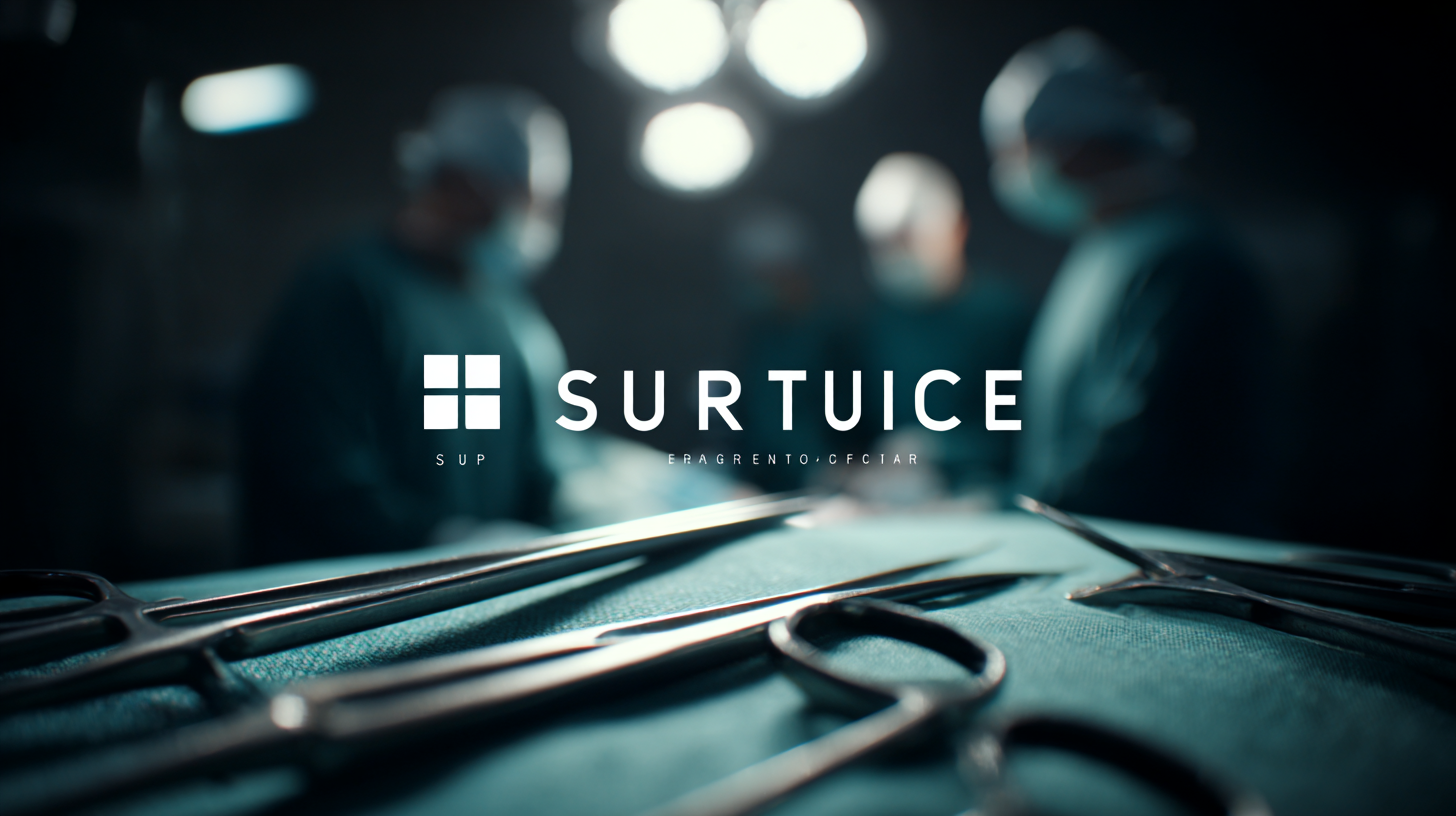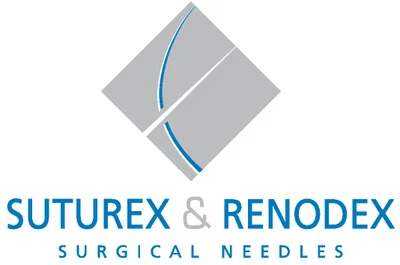You have successfully logged out.
Exploring the Advantages of the Best Surgical Suture for Optimal Healing
In the ever-evolving landscape of healthcare, the significance of selecting the right surgical suture cannot be overstated, as it directly influences patient outcomes. According to a recent market report by Grand View Research, the global surgical suture market is projected to reach USD 5.7 billion by 2025, driven by advancements in surgical technology and an increasing prevalence of chronic diseases. As healthcare professionals strive for optimal healing in different surgical procedures, understanding the various types of surgical sutures—such as absorbable and non-absorbable materials—has become critical. This blog delves into the advantages of employing the best surgical suture options available today, aiming to highlight how the right choice contributes not only to successful recovery but also to improved healthcare efficiency and patient safety.

The Impact of High-Quality Surgical Sutures on Post-Operative Recovery Times
When it comes to post-operative recovery times, the choice of surgical sutures can make a significant difference. High-quality surgical sutures are designed to provide optimal tissue approximation, which enhances healing and reduces the risk of complications. By utilizing materials that promote minimal tissue inflammation and encourage collagen deposition, surgeons can ensure their patients experience quicker recoveries and better overall outcomes.
Tips for selecting the best surgical suture include considering the type of material used. Absorbable sutures, such as those made from polyglycolic acid, are ideal for internal organs where prolonged support is not necessary. In contrast, non-absorbable sutures, such as silk or nylon, might be preferred for skin closures, as they provide durable support throughout the healing process. Additionally, it’s essential to match the suture type and size with the specific surgical procedure for optimal results.
Another key consideration is the suture's tension properties. Sutures that maintain appropriate tension can help minimize scar formation and speed up recovery by preventing tissue breakdown. It’s worth discussing with your healthcare provider the options available, as this choice can have a profound impact on the healing timeline and patient's comfort after surgery.
Exploring the Advantages of the Best Surgical Suture for Optimal Healing - The Impact of High-Quality Surgical Sutures on Post-Operative Recovery Times
| Suture Type | Material | Tensile Strength (MPa) | Absorption Time (Days) | Typical Use | Post-Operative Recovery Time (Days) |
|---|---|---|---|---|---|
| Absorbable Suture | Polyglycolic Acid | 20.0 | 60-90 | Soft Tissue | 14 |
| Non-Absorbable Suture | Nylon | 25.0 | N/A | Skin Closure | 10 |
| Absorbable Suture | Catgut | 15.0 | 70-90 | Internal Surgery | 12 |
| Non-Absorbable Suture | Silk | 30.0 | N/A | Cardiovascular | 15 |
| Synthetic Absorbable Suture | Polyglecaprone | 18.0 | 90-120 | Orthopedic Surgery | 11 |
Key Characteristics of the Best Surgical Sutures Used Globally Today
When considering surgical sutures, the choice of materials and techniques can significantly influence patient outcomes, particularly in areas like abdominal closure. Recent studies highlight that the material and surgical approaches employed are critical factors in minimizing the risk of incisional hernias—a common postoperative complication. For instance, reports indicate that absorbable sutures are often preferred for their ability to reduce long-term foreign body reaction, thereby promoting optimal healing.
In today’s medical landscape, the most commonly used sutures include materials such as polyglactin and polydioxanone. These absorbable options are gaining traction due to their favorable handling characteristics and lower rates of infection compared to non-absorbable alternatives. Additionally, advancements in suture technology have led to the development of barbed sutures, which eliminate the need for intricate knot-tying and potentially enhance tissue approximation. This can be particularly beneficial in abdominal wall surgeries, where precise closure techniques are essential for preventing complications like incisional hernias.
The choice of the best surgical suture not only reflects its physical properties but also incorporates the surgeon's experience and the specific surgical scenario. The ongoing evolution of suture materials is paving the way for improved surgical practices, ultimately leading to better patient outcomes and reduced postoperative risks in various clinical settings.
Comparative Analysis: Domestic vs. Imported Surgical Sutures in the Market
In the evolving landscape of surgical sutures, the comparative analysis between domestic and imported options reveals important insights that can significantly affect healing outcomes. Domestic surgical sutures often benefit from closer regulatory oversight and adherence to local standards, potentially boasting higher quality control. In contrast, imported sutures may offer advanced materials and technologies, which can enhance their performance in specific surgical scenarios. As the Asia-Pacific surgical sutures market continues to grow, understanding the characteristics and advantages of each type becomes crucial for healthcare providers aiming for optimal patient care.
Moreover, the increasing demand for effective wound care solutions aligns with the growth in the global wound care market, projected to reach substantial values in the coming years. This rise hints at a broader trend of innovation within the surgical materials sector. Medical professionals are now faced with the task of choosing the best sutures available—whether domestic or imported—that not only meet economic objectives but also support the paramount goal of patient recovery. Paying close attention to these distinctions can aid in making informed choices that ultimately enhance surgical outcomes.
Statistical Insights: Surgical Suture Success Rates and Patient Outcomes
 When it comes to surgical procedures, the choice of suture material plays a pivotal role in determining patient outcomes. According to a comprehensive study published in the Journal of Surgical Research, the success rates of sutured wounds can vary significantly based on the type of suture employed. For instance, absorbable sutures have been shown to achieve a wound dehiscence rate of just 1.5%, in contrast to non-absorbable sutures, which can lead to dehiscence rates as high as 5.7%. This highlights the critical importance of selecting the optimal suture material for enhancing healing.
When it comes to surgical procedures, the choice of suture material plays a pivotal role in determining patient outcomes. According to a comprehensive study published in the Journal of Surgical Research, the success rates of sutured wounds can vary significantly based on the type of suture employed. For instance, absorbable sutures have been shown to achieve a wound dehiscence rate of just 1.5%, in contrast to non-absorbable sutures, which can lead to dehiscence rates as high as 5.7%. This highlights the critical importance of selecting the optimal suture material for enhancing healing.
Further analysis reveals that the application of high-quality surgical sutures correlates directly with improved patient outcomes. The British Medical Journal reported that patients who received sutures made from synthetic materials experienced 30% fewer post-operative complications compared to those sutured with traditional silk. Furthermore, the same study noted that the integration of specialized sutures, such as those coated with antimicrobial agents, reduced infection rates by approximately 40%. These statistics underscore the necessity for surgeons to consider both the type and quality of suture when aiming for the best possible healing results post-surgery.
Future Trends in Surgical Suture Technology: Innovations from China and Beyond
The landscape of surgical suture technology is rapidly evolving, with innovative advancements emerging from China and other leading nations. According to a report by Allied Market Research, the global surgical sutures market is projected to reach $5.3 billion by 2027, growing at a compound annual growth rate (CAGR) of 5.6% from 2020 to 2027. This growth is driven not only by increasing surgical procedures worldwide but also by advancements in suture materials and techniques.

Chinese manufacturers are at the forefront of this transformation, investing heavily in research and development to produce sutures that enhance healing and minimize scarring. For instance, bioengineered sutures with antimicrobial properties are becoming more prevalent, reducing postoperative infections significantly. A recent study showed that the use of such sutures led to a 30% decrease in infection rates in surgical patients. Moreover, sutures that incorporate absorbable technologies are gaining traction, allowing for seamless wound closure without the need for suture removal, thus improving patient comfort and recovery times. As the industry continues to innovate, the future of surgical sutures holds promise for improved patient outcomes and streamlined surgical processes.
